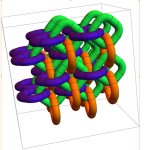Interesting research, I thought someone here may find it interesting.
Has anyone seen a grid of knots while in communion with a plant teacher? That is what the early inflationary universe may have looked like...
Has anyone seen a grid of knots while in communion with a plant teacher? That is what the early inflationary universe may have looked like...



